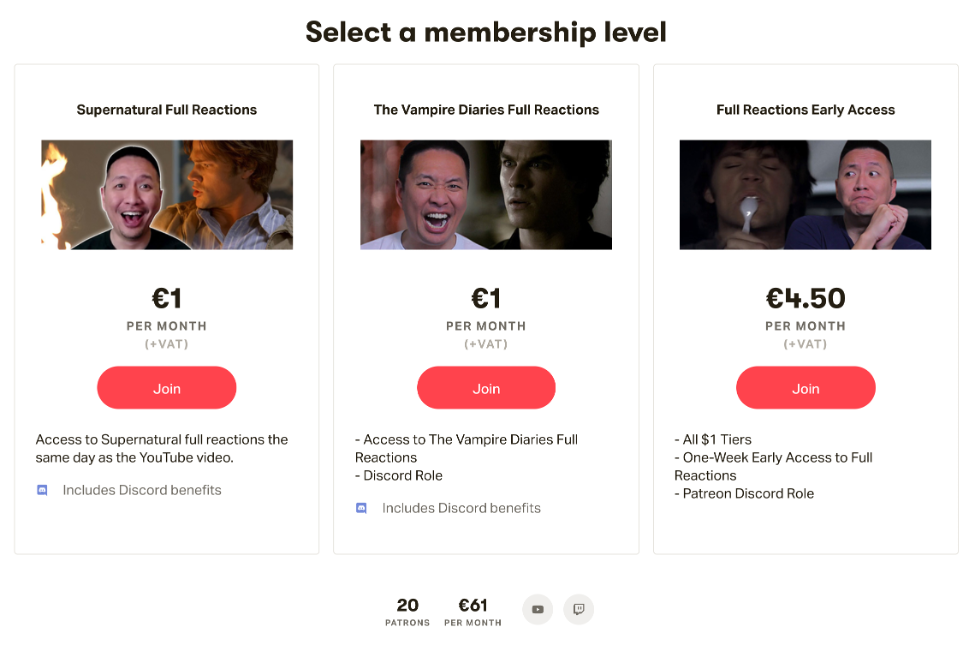If you have been frequently watching videos from platforms such as YouTube or TikTok, you might have seen videos with titles “REACTING TO…” or “Funny reactions of…”.
This category of videos are called reaction videos, namely a video displaying the reaction of people (or even animals) toward another video clip. The reactors provide their comments both verbally and with overexaggerated facial expressions on clips from famous TV series, celebrities’ performances, or simply other people’s lifestyles.
It is likely that you find that you are sharing the exact same emotion with the reactor, a feeling that you are not alone, and the reactor becomes a “close friend” to you. On the other hand, there may be scenarios where you find yourself disagreeing with the reactor, giving distinct perspectives on the same issue.
Short history
Early in 1981, the technique of reaction videos were introduced by a Japanese variety show. The program, Naruhodo! The World was a quiz show where contestants answered questions from clips about places around the world.
The show faced a common issue as many TV programs did, that audiences were not constantly attracted to its contents. The director decided to invite several celebrities and comedians as guests, and soon found out it was worthwhile to share their reactions toward the clips.
After adding their verbal comments and laughter to the soundtrack (as many American situation comedies now do) the directors came up with the idea to frame the faces of guests, superimposed on the original clips.

The “picture-in-picture” (PIP), waipu (ワイプ )in Japanese, has gained huge success in catching the eyes of audiences in front of the TV with the help of the celebrity effect. The technique is still used today in many TV shows and even spreads outside of Japan.
Today, the PIP technique is employed in most reaction videos, elbeit with different formats. Sometimes it is the image of the reactor which is framed larger than the picture of the video reacted. Other times, such as on TikTok, reaction videos can also be done by simply splitting the screen into two equal parts.
The channel REACT on YouTube (run by Fine Brothers Entertainment) has been posting reaction videos for 10 years and now has reached over 20 million subscribers. FBE hires people from the general public to react to videos about, among many things, the latest pop culture. They are a representation of anyone we meet in our daily lives, covering almost all generations, from kids to elders. Celebrities have also been invited to gain more popularity with the celebrity effect. The channel thus gains a diverse base of perspectives for the watching audience.
What to watch & Why are we attracted?
Though it is interesting to learn from other people’s perspectives, and often it is entertaining to see their dramatic reactions, the problem arises when choosing which reaction video to watch. Before watching it, we may have a presumption of the responses of the reactor, which makes us expect the reactor to behave in a certain way.
Confirmation bias is where we favour information that only confirms our previously existing beliefs.
This occurs firstly when people are choosing which reaction video to watch, usually the one they are familiar with and have previous knowledge on. Later when they are watching the reaction video, they are actually judging the behavior of the reactor, whether it fits with their own view.
In the case of not meeting expectations, the viewer can simply close the page and switch to the next video, believing the reactors are “biased”. While the original belief of the viewer is reinforced, the opportunity to learn from others’ perspectives is lost. Important details observed by other people may otherwise change the opinion of the object.
Biologically, the mirror neuron system in our brain is specialized in mirroring the behaviors of other people. It is also in charge of neurocognitive functions and neuropsychiatric disorders. Scientists have discovered that both social communication and identification depends on imitation of others.
The more we tend to imitate others, the more we are able to establish an empathic relationship with them.
This process involves adopting shared minds, through recognizing someone else’s facial expression, tone of voice and non-verbal communications. Therefore, when we are watching reaction videos, the emotion of surprise, excitement, anger or sorrow can all be directly passed from the reactor to the audience with their exaggerated responses. Without reacting to the content by ourselves, we are unconsciously affected by the message delivered from the reactor, whether on a larger or smaller level.
Lack of self-awareness, the effect of passively taking other’s emotions as their own can be undesirable and lead to an anchoring bias. The bias leads to an overdependence on the first-hand information we have on a specific topic.
During the process of watching a reaction video on a new topic, the audience may take the reaction shown as an anchor. In his/her later days when rethinking about the content reacted, it is likely they first associated it with the sentiments proposed by the reactor, instead of coming up with their own opinions. By taking other’s perceptions for granted, this hinders the formation of critical thinking by individuals.
In some cases, reaction videos are filmed by a group of reactors. They can be friends, family members, or complete strangers. A viral video can also be reacted by many people individually. Though there are differences in cultural backgrounds, gender, and nationality, similar reactions can be captured in reaction videos sharing the same topic. Again, this shared and repeated emotion can unconsciously pass to the audiences, where they tend to follow the tide.
This is where the bandwagon effect takes place, that people find it easier to believe in something if the rest of the world also believes in it. In order to fit in a community and avoid being odd, people are more willing to accept the thought of the majority rather than challenge it. The evaluation of ideas and behaviors on the basis of individual reason is neglected. As we all know, what is correct for others may not be good for you. The “herd mentality” is what we want to avoid.
Is it good or bad?
Comparing to other forms of video content, reaction videos can be filmed without articulated technology nor high costs. The only technique required is to impose another video on top of the original clip and make sure the voice recorded is clear.
The Economics Times has discussed the boom in reaction videos during the COVID-19 pandemic era. Many reactors now post on platforms such as Patreon for only membership-exclusive content. The content creators run a subscription service in order to earn monthly income.

As it has become a profitable and possible career for many, what should we be aware of? Based on the aim of attracting as many viewers as possible, the reactor may react with the consciousness of been filmed. It is similar to a two-way interpretive process, where the reactor’s action is a product of how he/she expects the interpretation of the targeted audiences would be.
If this is true, how can we tell the authenticity of the reaction video? Should we trust that the reactions are all spontaneous, or it is merely “planned performance” as a tacit to appeal to us?
It is no doubt that watching reaction videos can be relaxing. Some professionals also record reaction videos to provide insights from a technical basis, where practical knowledge can be learnt. However, we should always be aware of the “norms” of reaction videos and never let go of critical thinking. Perhaps next time when you are watching a reaction video, think which frame of the picture you are focusing on: is it the video itself, or the reactor?
